Sony’s gorgeous new 3D speaker is a pricey work in progress
Even if you can find a place to put it, you'll need patience.
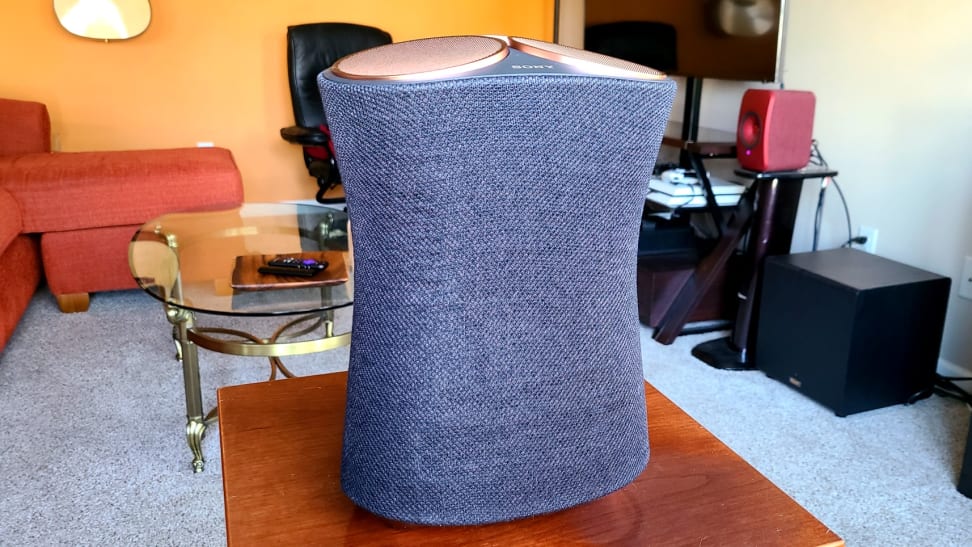 Credit:
Reviewed/Ryan Waniata
Credit:
Reviewed/Ryan Waniata
Products are chosen independently by our editors. Purchases made through our links may earn us a commission.
Sony’s exotic new SRS-RA5000 isn’t a speaker. Well, not just a speaker anyway. Along with its smaller sibling, the RA3000, Sony’s latest sonic hardware is first and foremost a vessel for the company’s immersive music format, 360 Reality Audio. From its multi-directional, seven-driver configuration to support for high-resolution audio over Wi-Fi from 3D sound sources—and a sticker-shocking $700 price point—Sony’s intentions for the RA5000 as a 360RA ambassador are clear from the get-go.
Following Amazon’s Echo Studio smart speaker, which supports the rival Dolby Atmos Music service, the RA5000 is tasked with helping Sony blaze its own trail in the 3D music landscape. However, while the RA5000 is an ambitious device with impressive sound quality, it’s also got some serious limitations at the moment, including a half-baked app, an awkward design, and a highly limited collection of songs to make it sing. But before we get into the details, what exactly is 360RA?
360 Reality Audio: The sound of (3D) music
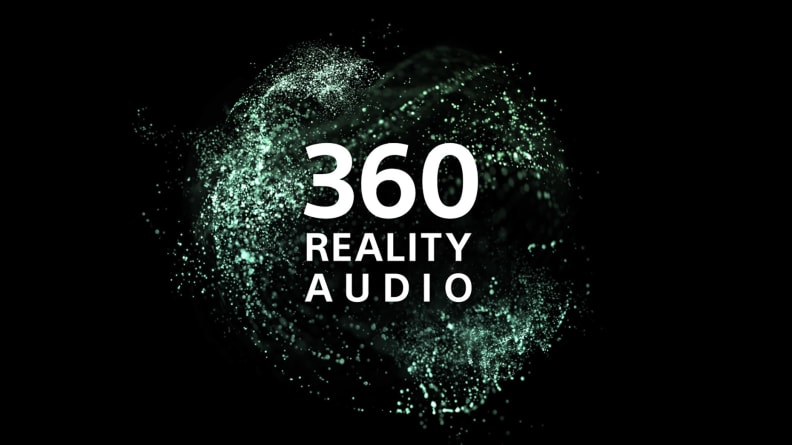
Sony’s take on the upward-trending 3D music format, 360RA was first showcased in Sony headphones like the popular WH-1000XM3 and XM4, employing advanced audio-mapping software to spread music around the soundstage. For home theaters, the aim is to create immersion not only on the horizontal plane but also on the vertical using height speakers that beam sound upward.
Like Dolby Atmos Music, 360RA has the potential to transform how we listen, transporting musical elements like drums, bass, keys, and even vocals out of the traditional stereo soundstage and positioning them in creative new ways. Sony says its goal is to “immerse listeners in their favorite music” in part to create "a live music feel."
3D sound formats, including Dolby Atmos and DTS:X, were originally developed for cinematic content. Dolby Atmos first appeared in high-end theaters before being pared down to multi-component home theater setups and, eventually, Atmos soundbars. These devices utilize surround and height channels to bounce sound off the ceiling and walls in a swell of sound. But only in recent years has music come into play.
With the RA5000, Sony hopes to utilize 360RA for an immersive musical experience in a single, multi-drive speaker. Most appealing, unlike the majority of current 3D sound systems which require hardwire connection to outboard devices for 3D audio, you can stream 360RA directly to the RA5000 from your smartphone through select apps, including Tidal HD, Deezer, and as of April 6, Amazon Music Unlimited. Amazon’s Echo Studio helped start the 3D streaming party, and the RA5000 aims to take it up a notch (or two).
Cool design but … where do I put it?
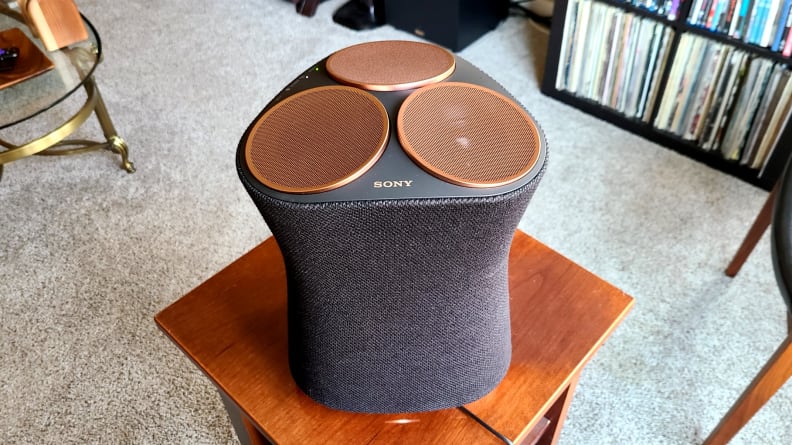
The design immediately begs the question of placement.
On the surface, the RA5000 presents an utterly impressive, if not somewhat bizarre design concept. Covered in sleek acoustic fabric and sporting copper-colored drivers poking out of the top in a pyramid pattern, the speaker looks like a mannequin torso at a high-fashion clothing store. It provides a speaker driver each for the front, left, and right sides matched by similarly oriented topside/height drivers. Designed to bounce sound off your walls and ceiling, these drivers are complemented by an interior woofer that outputs clean, potent bass.
On the speaker's sides are playback and volume controls, as well as buttons to switch inputs, pair the speaker via Bluetooth, and activate a calibration system for adjusting the sound to the speaker’s orientation. That requires a microphone, of course, but unlike Amazon’s handy Echo Studio, Sony's $700 job doesn’t support built-in smart assistants. While it can be controlled using Google Assistant or Amazon Alexa, you’ll need a separate speaker for voice commands.
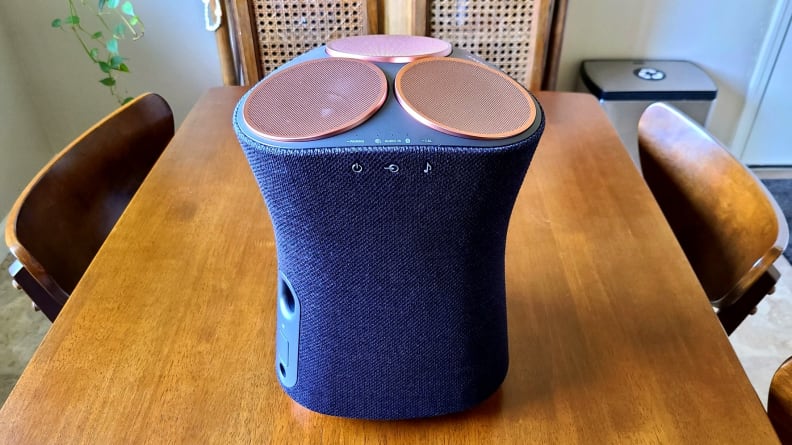
The controls are easily accessed on the side.
More surprising, though, is just how huge and—for my home—awkward the speaker is when it comes to placement, starting with which way to point it (the Sony logo goes in front). Because it’s designed to bounce sound off the walls, you’ll want it somewhere front and center. But at over a foot tall and nine inches across at its widest point, just where it fits is somewhat mysterious.
I tried placing it on my coffee table but it was both too big and too close. I next tried my TV console, but even as a temporary solution, the screen created so much sound reflection it sounded pretty awful. What’s more, the cord that plugs into the power brick is surprisingly short, further limiting placement options.
I finally ended up clearing off an end table. While it wasn’t ideal for listening from my couch, the RA5000 is designed to create “ambient, room-filling audio” anyway, so it seemed workable.
Still, if you haven’t got solid walls nearby, the immersive properties are limited and certainly can’t engulf you in the same way as even entry-level 3D-enabled soundbars with upfiring drivers and surround speakers like Vizio’s M-series 5.1.2 bar. I mention this mainly because that full surround setup costs hundreds less than the RA5000, and there are plenty of other such options within range. While you can’t stream 3D music to most soundbars from your phone right now, they offer more versatility for other applications.
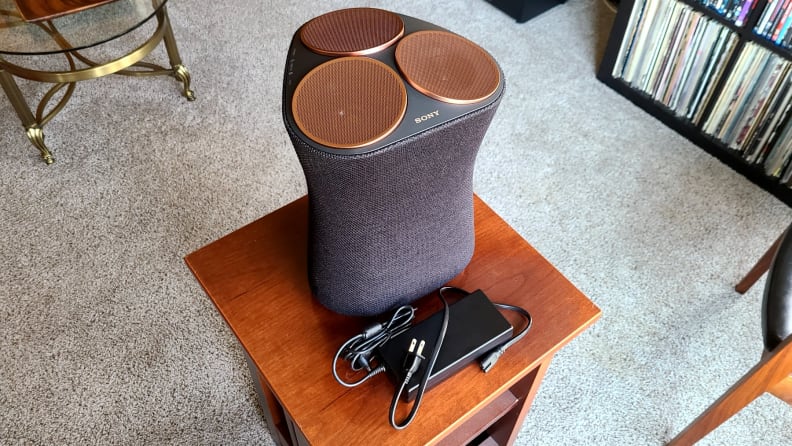
The short cords further complicate placement and orientation.
Sonos this ain’t
Unlike the simple, one-touch experience of connecting a Sonos speaker, setting up the RA5000 reminded me of old-school Wi-Fi speakers. In the box were three different sets of multi-step instructions. The 12-step Google Cast method seemed most pertinent to easily "cast" 360RA Audio from one of the handful of compatible services, though you're forced to connect to Bluetooth first and then go through the Google Home app. Once I finally got everything working through Sony’s own Music Center app things went smoothly—until they didn’t.
Music Center seemed to get confused about whether I wanted to cast tracks from Tidal over Wi-Fi (the only way to get 360 audio) or stream via Bluetooth. The speaker defaulted to Bluetooth every time I stopped playback or returned to Tidal from another setting. Sony's reps told me to unpair Bluetooth, and claimed the speaker’s Bluetooth confusion was something they hadn’t encountered (I seem to attract such issues).
But even putting that aside as a fluke, the Music Center’s playback interface is oddly lacking, offering volume control but no controls for song skip or even play/pause. Using the Tidal app alone worked just fine for uninterrupted 3D playback, and Spotify Connect worked swimmingly over Wi-Fi as well (though it doesn’t support 360RA, of course). As such, the simplest solution was to simply bypass Music Center altogether. I will give the app credit for offering a multi-band EQ and a few other handy features such as height channel tuning, but it definitely needs work.
Hi-fi chops
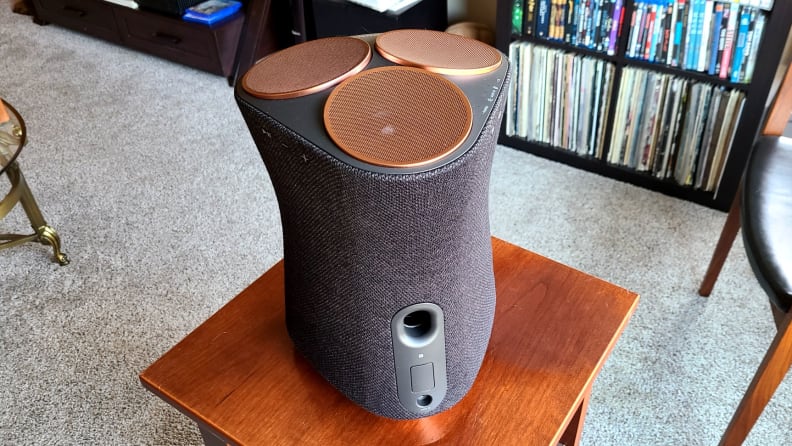
The drivers pack impressive punch and that signature Sony zeal.
Whichever path you use to stream audio to the RA5000, one thing is clear: it's capable of pristine Sony sound. Especially for stereo tracks, the sound signature is crisp, clean, and accurate. Instrumental attacks are brilliantly punctual, allowing the speaker to do shimmering acrobatics when tasked with speedy instrumental runs.
The speaker takes full advantage of Tidal’s Hi-Fi audio tracks in this mode, demonstrating a delicate touch thanks to the impressively low noise floor. You’ll hear every detail, from the buzz of strings in a standup bass to the breathy push of air across the reed of a saxophone just before it warms the air with brassy goodness.
In short, the drivers inside the RA5000 are excellent, and even when you’re not listening to 360RA tracks, there’s plenty to enjoy about the sound quality from this tri-pillared creation.
3D music drawbacks
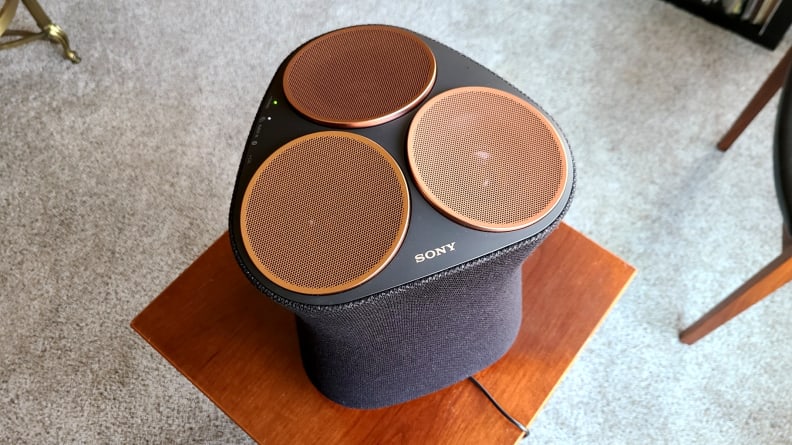
The height drivers are pointed in a tri-pod position to bounce sound off the walls and ceiling.
Pristine sound fidelity notwithstanding, the RA series is foremost an investment in Sony’s 3D sound format. There are any number of good wireless speakers on the market, and if that’s all you're after, you can get more for your money—and a lot better software—from brands like Sonos. So the real question is whether Sony’s 360RA format is worthy of major investment. At the moment my answer would be no, for a number of reasons.
First, while some of my 360RA sonic experiences were impressive, even bordering on revelatory, many others were just so-so or worse. Apart from speaker orientation, a lot of your experience depends on how well the engineer mixed (or re-mixed) the music. As 3D sound is a nascent musical format, you’ll find the quality of how well the sonic elements come together can vary greatly from song to song (and that’s not just a Sony problem).
For example, I was almost bowled over by Earth, Wind, and Fire’s “Getaway” in 360RA, exploding in a glorious cloud of synths and strings, and peaking with a lightning-fast synth arpeggio that proves the RA5000’s hi-fi pedigree. But Bowie’s “Space Oddity,” while certainly interesting, sounded, well, too spacey. The track is awash in reverb and introduces new elements that felt off to my ears after studying the original for decades. Dolby Atmos Music has its own peaks and valleys; in my brief encounters I’ve gotten chills from songs like Elton John’s “Rocket Man” (remixed at Abbey Road Studios), but I’ve also experienced relative flubs like Kenny Rogers’ “The Gambler.”
This issue is exacerbated by a simple lack of ammunition. By my count, there are at best a few hundred songs available in 360RA on Tidal, and I assume other streamers are similarly appointed. There are more 3D options if you add in Dolby Atmos Music, but the RA5000 can only play them in “HiFi” without any height element.
Once again, this isn’t just a Sony thing, but an indication of 3D Music in general right now. It’s in its early stages, and like 5.1 and Quadrophonic music before it, there’s no telling if or when it will take off in earnest.
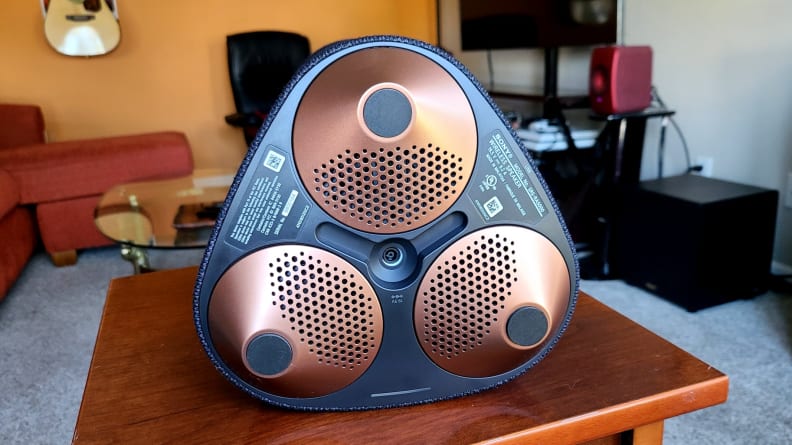
The speaker sits on three fashionable stands that surround a power port on the undercarriage.
Perhaps most disappointing, while the speaker does have an Immersive Audio Enhancement feature for non-3D tracks, it’s subpar at best for high-resolution stereo mixes, and an echoey mess of reverb, bass, and sunken vocals for most Bluetooth tracks.
Should you buy it?
No, it’s too early to invest this much cash in 3D music
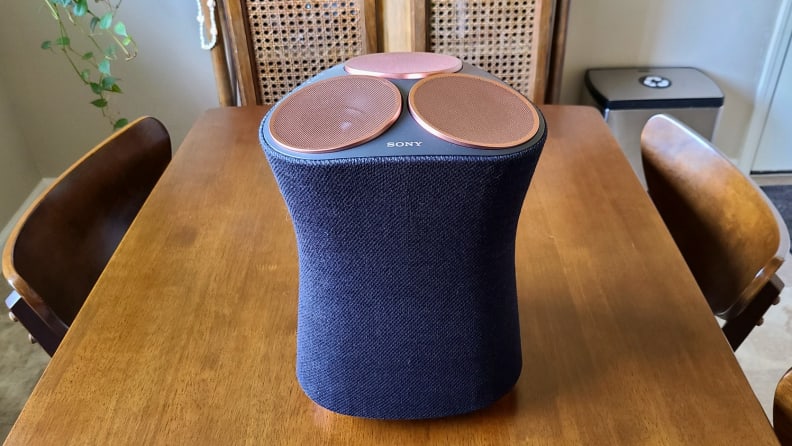
Sony’s RA5000 is an ambitious addition to the 3D music lexicon, offering impressive punch, a conversation-starting design, and support for high-resolution audio. But work-in-progress software, inconsistent performance, and a short supply of SonyRA tracks to explore make its $700 price point too tough to swallow.
The best bet for most people looking to dip a toe into 3D music at home is to either try a more affordable option like the Echo Studio smart speaker or (potentially) Sony’s own RA3000, or simply to pick up a Dolby Atmos soundbar and a streaming device that supports Dolby Atmos Music like a Fire TV Stick or Apple TV 4K. Such a setup lets you experience immersive cinematic content from popular movies and TV shows like The Mandalorian, while also dabbling in this exciting, but preliminary, new musical format.
Alternatively, you can try out virtualized 360RA using headphones like the indomitable WH-1000XM4.
Those willing to invest in a very fancy and very distinctive speaker could do worse than the RA5000. If you’ve already fallen in love with it on looks and hi-fi skills alone, its 360RA streaming could be the 3D olive in the martini. Just be aware that, as far as 3D music goes, you’ll have to be patient. After all, that’s what early adoption is all about.
